#Watsonville California
Explore tagged Tumblr posts
Text

Ready for Nerdville, a one day con in my hometown of Watsonville, CA! You can find me, my comic, and handmade dragons at booth 32. Join me in the Watsonville High School Gym for a day of need related fun!
All of my Santa Cruz county people have no excuse not to be here! Come say hi! More info here: https://www.friendsofwatsonvillepcs.org/nerdville-comic-art-fantasy-and-collectibles/.
Embyr just got adopted! Her adopter got all of the comics as well, so she’ll be able to learn all about her new dragon. If you want to adopt a dragon of your own, come see me at Nerdville today in Watsonville, CA!

Diamondflare just got adopted! This adorable adopter had been eyeing this puppet all day, and convinced his parents in the last few minutes of the show to let him bring his dragon home. Always nice to end a show on such a happy note!

#dragons#comics#Nerdville#dragon child comic#all ages modern day fantasy comic#women in comics#indie comics#fantasy#women cartoonists#handmade plush toys#manga style#support local artists#Watsonville California#dragon adoption#Embyr the green dragon plush#Diamondflare the blue dragon puppet
4 notes
·
View notes
Text



꧁★꧂
#buildings#mural#fake building#market stall#fruit stand#warehouse#watsonville#california#flickr#oldweb#old web#2007
44 notes
·
View notes
Text

Watsonville/Pajaro California...
1 note
·
View note
Photo
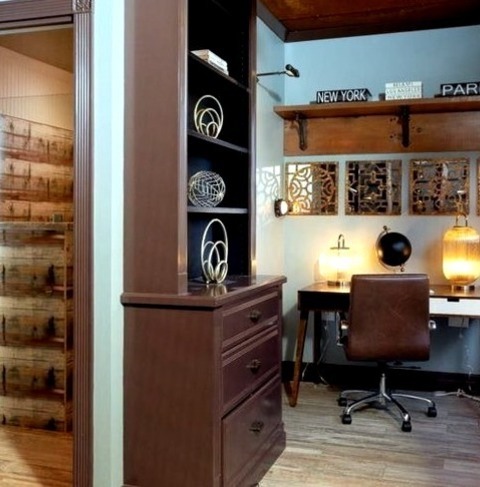
Contemporary Home Office Small trendy freestanding desk light wood floor and beige floor home office photo with white walls
0 notes
Text
3 Ways to Make a Move and Buy a Home Before You Sell! - What this California girl can do to get you the home of your dreams!
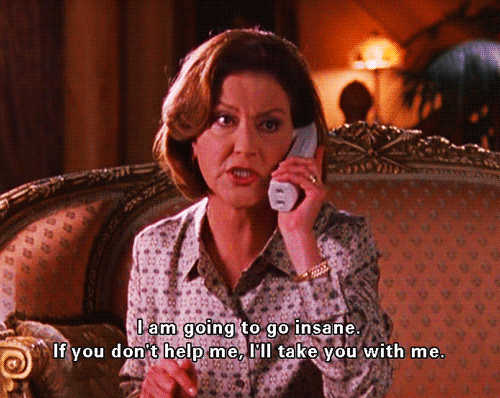
Howdy, homeowners! Are you ready to make a move? Feeling stuck with a house full of equity but low on cash? Well, guess what? You can purchase a new home even before you've sold your current one! I know it sounds too good to be true, but fear not. Today, we're diving into three fabulous strategies that will help you navigate this situation with ease and confidence. So get ready for a stress-free real estate experience. Let's go!
Option 1 - Bridge Loan: Bridge to Close Picture yourself building a bridge between your current home and your dream home—introducing the bridge loan! Here's the lowdown:
Pros:
Speedy home purchase: With a bridge loan, you can secure financing for your new home pronto, ensuring you don't miss out on your dream abode in a competitive market. We're talking about getting you from contract to close in about 11 days!
No more contingencies: Say goodbye to contingencies! With a bridge loan, you can make a non-contingent offer, making you the superstar in the eyes of sellers. It's almost like making a cash offer, leveraging the equity you already have.
Cons:
Bridge loans may have higher rates, but the trade-off is worth it. Yes, the interest rates may be slightly higher than a traditional loan, and there are origination costs to consider. But hey, when you think about it, it's a small price to pay for the quick resolution once your primary residence sells. In California, where home sales tend to complete within 60 days in 2023, let's discuss your property and sales timeline to help weigh your options.
The possibility of juggling two mortgages: Balancing the financial responsibilities of two mortgages until your current home sells can be challenging. But fear not! With a trusted professional by your side, you can be confident that your home will sell within your desired timeline.
Option 2 - Leverage an Offer on Your Property: Unlocking New Doors Did you know that you can leverage a current offer on your property to move into a new home? Ready to unlock a world of possibilities? Let's explore:
Pros:
Be the offer champion: With a contract in hand, you can confidently make offers on new homes without worrying about selling your current property first. This gives you a significant edge over those dealing with lengthy loan periods. As a diligent buyer, you can potentially close in just 15-21 days!
Lightening the financial load: Once you've secured a contract, you can use the expected proceeds as a down payment or collateral for a new loan, making your journey to a new home much more manageable. This option is especially helpful if you're having a hard time saving for a down payment.
Cons:
Timing is everything: Keep in mind that there's always a small chance the sale of your current property may hit a roadblock. However, when you work with a trusted professional who brings you a bonafide contract, you're setting yourself up for success.
In this bananas market, most sellers prefer non-contingent offers. But don't worry! There are still plenty of amazing homes and sellers who will consider this small contingency a better offer than a traditional loan. You've got this!
Option 3 - Submitting a Contingent Offer: A Safety Net with Negotiating Pizzazz Let's add a pinch of caution with a contingent offer—your very own safety net with a twist. Here's the traditional way to buy a home before you sell:
Pros:
Peace of mind: A contingent offer provides a safety net, ensuring you won't end up owning two properties simultaneously. So go ahead and sleep soundly.
Dance of negotiations: A contingent offer gives you the freedom to sway and negotiate the terms of the sale, including timelines and potential price adjustments. Remember, staying positive and appealing to logic during negotiations is key. Once you're in contract, problem-solving becomes a breeze.
Cons:
Non-contingent envy: Most sellers prefer non-contingent offers. However, there are plenty of sellers who appreciate the unique circumstances and are eager to join you on this exhilarating journey.
Keep in mind that your negotiating power may be slightly limited. With low inventory and the stability of home prices in California, even amidst economic stress, prices aren't dropping significantly.
So, what's your favorite idea for buying a home before you sell?
Now that you've discovered three thrilling ways to buy a home before you sell, it's time to dive deeper into your unique circumstances. Reach out today, and together, we can uncover the perfect path for your journey. As always, I strive to bring you a stress-free real estate experience! Click now to discuss which thrilling option is right for you!
Happy house hunting, fellow homeowners!
Megan Kilmer is a Santa Cruz County local with a passion for housing. Megan has a background in Social Services and is an expert on goal setting and motivation. With a wide network of trusted local resources, she is a problem solver! Need to buy, sell, lease, manage, or finance a real estate project? She's got you! Call for a free Real Estate Consultation 831-888-7530

#homeselling#homebuyers#realestate#goalsetting#mortgage#lending#problem solving#homesweethome#santacruz#california#los angeles#san francisco#bayarea#southern california#norcal#capitoal#soquel#watsonville#seaside#seascape#aptos
0 notes
Text
80+ PROTESTERS VIOLENTLY ARRESTED AT UCSC
PROTESTERS ARE ASKING ALUMNI TO PARTICIPATE IN AN EMAIL ZAP: bit.ly/zap-ucsc
& FOR EVERYONE TO DONATE TO THEIR BAIL FUND: (Venmo) pizza_party_1312

[ID: UCSC students waving Palestinian flags and holding protest signs at the base of campus. /ID]
Longer write-up based on personal knowledge, news articles, and multiple direct sources below.
****
For roughly a month, UCSC administrators, including chancellor Cynthia Larive, have been essentially politely asking protesters at the pro-Palestine encampment to "voluntarily disband." I was told personally by members of the encampment that among the demands they were given by the administration, two were 1) to guarantee Larive's safety, in part by not allowing any calls for violence against her, and 2) not to use images of her to make memes. "They specifically said memes," said the protester I spoke to. Additionally, protesters were told the use of the word "genocide" in a public statement by UCSC admin was "off the table."
The consensus among organizers appeared to be that Larive was vainly hoping to "wait [them] out," knowing she was in a no-win scenario: call the police and risk looking evil, or let the encampment stay and risk looking toothless. (It was clear which side she leaned towards.) Additionally, @kiegotakami mentioned hearing from a source at the department that "none of the local cops want the public scrutiny nor do they care abt the encampment so they’ve been avoiding it."
Protesters escalated by first blocking the entrance/s to campus temporarily, then moving their encampment down to the base of campus, beginning an academic worker strike on Monday 5/20, and finally, as of Tuesday 5/28, blockading both campus entrances indefinitely. Classes moved online. There was a dispute as to whether an ambulance was blocked from entering campus to help a child who was choking; protesters maintain that it was police, not them, who formed an obstacle. Larive later claimed again that it was the protesters.
(Larive also characterized SJP's demand that UCSC cut ties with specifically pro-Israel groups as "demand[ing] that we end relationships with organizations that support our Jewish students and funders that support important student success work and happen to be Jewish organizations." (emphasis mine) SJP did not call for the disbanding of all Jewish groups, not even all Zionist ones. They singled out the ones which list furthering Zionism in their mission statements. The conflation of holding a specific political opinion with being Jewish generally is an unacceptably racist one that echoes the "dual loyalty" myth.)
After protesters refused to disband their encampment at the base of campus, 100+ police officers from Eureka, San Francisco, Watsonville, Berkeley, San Mateo, San Jose, Santa Clara, and Riverside, as well as the California Highway Patrol, slowly dismantled the blockade, bulldozed the encampment, and arrested anywhere from 80-100+ people. (Numerous student/protester/organizer sources list more than 100 arrested, as well as greater numbers of police.) The bulk of the conflict occurred between 12 and 9 AM on Friday 5/31 morning, marking the 31st day and a full month of the protest.
Students present at the demonstration say the police were outfitted in riot gear and focused their abuse immediately and especially on women of color at the encampment. Students were "stabbed... in the stomach" with batons, hard enough that some vomited. One was covered in a spit hood for saying the cops' "glasses looked stupid," and thrown to the ground hard enough to give him a concussion.
From an anonymous source:
We were thrown to the ground and dragged along the concrete. Our faces were clawed at, masks were ripped from our faces, helmets were torn from our heads so the straps dug into our throats, and our eyes were gouged out. Several of the women had their clothes ripped off, one particular trans comrade who was pleading for the cops to have any form of humanity, had “trick” screamed at her before her skirt was ripped off and she was thrown to the ground. All the while, they laughed. Snickering as people were beaten unconscious. After each one of us was detained, the police took selfies with us, grinning over their trophy. We were shoved into buses and vans where they blared music that rattled the cages we were thrown into until we couldn’t think. This went on for hours. In one of the buses, people were told to go to the bathroom on the bottom staircase. We were organized by sex (not gender) and the cops called non-binary people “x-rays” for the x identification on their license. First, it was the county jail, then a university parking lot, then a university building. The cops, with their hands on their pistols, shouted for us all to sit down. We all sat with our wrists tied behind our backs, the marks of which I still have on my arms a day later. The cops proceeded to play the “good guy” act as though all of us weren’t covered in bruises inflicted by them just hours earlier. Our restraints were cut, and they slowly called us by name. After several hours, my name was called. I was banned from school for the rest of the year, given a court date, and sent out like none of that had just happened.
Despite the brutality, protesters were back at the base of campus by the end of the day on Friday. Morale appears largely unshaken, and (despite bots brigading r/UCSC) student support across online and in-person spaces is at a high.
Some students were asked by KSBW about their arrests. “The people in Palestine are going through far worse than a citation," said Aydan Beavers. "So yeah, I believe it was worth it."
****
Once again, students are asking alumni to support them in an email zap at bit.ly/zap-ucsc, and for everyone to please donate to their bail fund, Venmo @/pizza_party_1312.
Sources: [Sentinel] [KSBW] [SJP Instagram] as well as multiple anonymous private sources.
#palestine#ucsc#santa cruz#free palestine#gaza solidarity encampment#gaza encampments#current events#txt#I could say a lot more about the organizations SJP is against/for but this isn't really the post for that.#Please correct me if you have firsthand information or a source contradicting what I've said here!
298 notes
·
View notes
Text

Sometimes the struggles we go through to be ourselves can be as rewarding as the end result.
A pretty breezy one here. Only content notes are surgery mention and needle mention. No gore to be found, no sex neither. Just good ol' fashioned yearning.
This is definitely a bit of a right angle to my usual stuff. There's no horror, it's light on dialogue, but its in a very similar space to a lot of the other stuff, just a different way of going at it.
Daughter of Elysium
I scheduled the surgery without telling my parents. They wouldn’t understand.
When I came out as trans they were supportive, in perhaps the slightly awkward way that cis people tend to be when they want to be accepting of things they don’t understand. This was different though.
I sat in the waiting room of the clinic in Montevideo, lined with faux wood paneling and sleek glass. Peak 2010s architecture. An older building, but the clinic’s reputation spoke for itself. There was no way I was going to get this procedure done in North America. Too expensive, too niche.
Too many hoops to jump through, too. Go see this doctor, talk to this therapist. Walk with these crutches. Practice with this fake charger for a year. Bullshit, all of it. I just wanted to be me.
So I saved money where I could. I slept in the heat of the Californian summers, kept the lights off early in the winter, rode the train to work, ate cheap meals, canceled all my subscriptions, lived in a 300 sq foot apartment in Watsonville.
3 years and $100,000 Californian Dollars later, I got on a train in Santa Cruz for a 3-day journey to Uruguay.
It was late June, a few days before the solstice. This far south of the equator that meant the sun rose late and set early. It was early morning, a quarter to 7, and 5 hours ahead of California time. I was used to being awake at night, but that only made the early sunrise more disorienting.
“Lewis, Kara,” a thrill of adrenaline rushed through me as the receptionist called my name. After reciting my birthday to confirm my identity, I was taken back to preop. I changed into a surgical gown and then lay down on a gurney while a nurse ran an IV to my arm and started saline. I thought about asking what happened once the arm was removed, but I figured it wasn’t worth the explanation.
For the next 10 minutes I stared at the clock. I hadn’t brought anyone with me. This was something to do for me, by myself. No partner, no friends. I had brought a bag with one change of clothes, my passport, and my phone. I thought about calling my friend Cory, but decided against it. No sense in getting anyone worried. As far as the outside world was concerned, I was on vacation.
I guess that wasn’t too far from the truth.
At 7 sharp, a couple of orderlies came in, checked my name and date of birth, and released the brakes on the gurney. They wheeled me out into the chilled hallway, and through the double doors into the operating room.
Inside the surgeon, the anesthesiologist, and several techs were waiting. A nurse placed a mask on my face and told me to count backwards from ten. A sweet, chemical smell filled my nostrils, and the world faded out.
* * *
It wasn’t the first time I’d had surgery, so the novelty of coming up from the anesthesia surprised me. Rather than the slow, heavy feeling I’d expected, it was like waking up from a nap. Disorienting, but in a cozy way. Nothing hurt. I hadn’t expected that. Probably the painkillers were still feeding in.
I tried to open my eyes, but my lids only twitched slightly. I heard one of the nurses say “You’re awake! The doctor will be in to see you soon. Everything went well, congratulations.”
I tried to reply, but my jaw moved jerkily and I had trouble forming words. The result was a disjointed grunt emerging from my mouth. But I could tell that I had a mouth, which was good.
The nurse left. I could hear his shoes squeaking off into the distance. As they faded, the thrum of the HVAC replaced it, and an occasional mechanical whirring near me. My eyes were still closed, and for the first time I noticed the green letters in the corner of my vision. Instinctively, I tried to look at them, but they moved with my eyes. After a time I was able to make them stay put long enough to look at them.
ARLINGTON ROBOTICS SYSTEMS
BANGOR, WASHINGTON, CASCADE REPUBLIC
I managed to open my eyes after a few minutes. At first it was all much too bright, everything blown to white, but after a few seconds my vision dimmed to a comfortable level. I focused on a tiny hole in the floating ceiling above. After a moment, I managed to zoom my vision in.
I marveled for a time at the detail in the ceiling. This mass-produced object, fiberglass and paper, contained so much beauty. How many times had I stared a ceiling like this without noticing?
The doctor came in and reaffirmed that everything had gone well. She told me that rehab would start in a few days, once my new body’s systems stabilized and adjusted to neural commands. I tried to smile but couldn’t manage to get my face to move right.
The doctor chuckled and plugged a display into a port on the back of my new neck. She held it up to me, and I watched as the words “What is this for?” appeared on it. She explained that until my vocal rehab started to kick in, this display would help me communicate.
She told me to raise my arms out to my sides. I struggled with this task for a moment before finally managing to do so. For the first time I got a look at the body I’d picked out from the inside.
Gray plating, seams that slid over each other, an unapologetically mechanical body. I’d wanted that. They’re getting good at synthetic skin these days, but I wanted to distance myself from humanity. There was nothing wrong with humanity, but it never spoke to me. I’d always been somewhat apart.
* * *
I slept most of that first day. The next day they let me eat. The bioprocessor seemed to be working, the staff said, but I should keep it light, and stick to carbs rather than fat and protein until the new tract could build up a sufficient biome to support those.
Odd as it sounds, it was 36 hours post-op before I realized I hadn’t peed. The charging station that I hooked into took care of filtration and detox of what little biomass I had left. I felt suddenly elated. I actually tried to get up out of bed, and promptly tripped over my own foot, smashing my face against a wall.
The nurses rushed in, worry on their faces, but I couldn’t stop laughing, and that’s when I heard my voice.
It wasn’t like my old voice. It wasn’t cold and computerized, but warm, and rich, like an old Roland Jupiter, full of dense harmonics, singing highs, and comforting, enveloping lows.
Soon I was sitting on the floor, sobbing. My eyes didn’t water anymore, but I still went through the motions. I held my gray plastic hands to my face, and touched them to my cheeks. I felt the subtle vibrations as motors moved my eyes around. I had never felt so happy, so myself. So real.
* * *
After a week I was able to clumsily walk around the hospital room, and they moved me to the recovery house. I met a few other converts there. There was a girl named Morgan from Seattle, a guy named Case from Kansas City, a few others. I mostly kept to myself.
I started speech therapy shortly after the move. Lots of reading convoluted sentences, but also singing, reading poetry, even some play-acting. I grew to love my voice. It was obviously synthetic, but that only made it feel more like a part of me.
Motor therapy was interesting. They asked me if I played any instruments. I told them I played bass. The therapist walked to a closet and returned with a bass made entirely out of carbon fiber. I asked why they made it from that, the therapist told me I’d see shortly, and handed me the Bass.
I immediately gripped the neck with far more force than I’d intended, denting the frets and the strings. I said I understood now.
Time flew. The solstice came and went, and by August I could speak clearly, play “Highway Star,” and wash my own chassis without damaging it. I could dress myself. I could walk without tripping over my feet.
On an evening in early August, I bade farewell to my fellow converts at the recovery house, and made my way to the train station. I could have taken a cab, or the bus, but I opted to walk. It was 8 miles and took all night, but I enjoyed every moment of it. Never tiring, stopping for food to recharge myself here and there at convenience stores and night markets.
I settled into my roomette for the trip back to Santa Cruz, looking out at Montevideo Bay. I saw my reflection in the window of my train, and for the first time, really took it in, with eyes that were my own.
342 notes
·
View notes
Text
I'm still jobless. It doesn't look like any of the places I'm applying for are hiring until Spring truly comes around. I have my dog's meds, my own rent, and a few other hundred expenses to worry about on my mind. I REALLY need some sales on my work but I am juggling five social media accounts with no training all on my own without ques to better help me manage these things. My SSI+SSA goes to my rent. Without the extra minimum wage I was earning twice a month I can't afford 'little' expenses.
A link to my Etsy in the meantime. Much help/selling advice is beyond appreciated, kids!
42 notes
·
View notes
Text



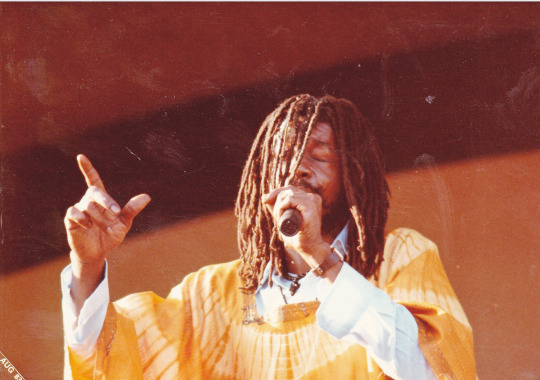

Peter Tosh At The 1st Ann. Reggae Sunsplash. '83.
Rare photographs of Peter Tosh performing at the Santa Cruz County Fairgrounds!
Photographer: Rodger Hisken
Location Of Photograph: Watsonville, Santa Cruz County Fairgrounds, California, USA. 08/20/1983
#reggae#peter tosh#rare#jamaica#music#rasta#herb#jah#80s#1983#live#concert#roots#sunny#reggae sunsplash#santa cruz#california#usa#united states#dreads#dreadlocks#african#artist#singer#songwriter
23 notes
·
View notes
Text
Supplemental Security Income beneficiaries receive too little each month to reasonably afford apartment rent in any housing market across the nation, a new report shows. Nationally, the average rent for a basic studio or one-bedroom apartment exceeds the average SSI payment of $983 per month. Even in the cheapest rental market in the country — Dallas County, Mo. — rent for either a one-bedroom or efficiency would require 64% of a person’s monthly SSI payment.
The findings are outlined in a new report called Priced Out that’s regularly updated by the Technical Assistance Collaborative, a nonprofit focused on housing issues among people with disabilities, and the Consortium for Constituents with Disabilities, a coalition of disability advocacy organizations. “With the latest data from several federal sources compiled at the end of 2023, it is unfortunately clear that yet again, the 4.1 million people with disabilities ages 18 to 64 who receive SSI cannot afford an apartment in any housing market in the United States without additional support,” Lisa Sloane, a director at the Technical Assistance Collaborative, wrote in a posting about the findings. “Because there is neither enough affordable housing nor sufficient access to rental assistance, many of these people find themselves homeless, at ongoing risk of homelessness, living in segregated institutions, or incarcerated.”
The researchers compiled data on fair market rents in housing markets across the nation from the U.S. Department of Housing and Urban Development and compared those numbers to SSI payments for each locality. While federal SSI payments are capped at $943 per month for individuals and $1,415 for couples, some states chip in extra. The average rent across the country for a basic one-bedroom apartment runs $1,398 per month, with a studio running just shy of $1,300, according to the report. At the highest end, SSI recipients would need two-and-a-half times their monthly benefits to pay for either a studio or one-bedroom apartment in the Santa Cruz-Watsonville housing market in California.
The researchers note that many SSI recipients qualify under the Department of Housing and Urban Development’s classification of “worst case housing needs,” which is defined as households with incomes at or below 50% of their area’s median income who receive no government housing assistance, pay over half their income in rent, live in severely inadequate conditions, or both. “More often than not, people with developmental disabilities go to school with people who do not have disabilities, work with people who do not have disabilities, and should be able to expect to live in (the) community according to their own choices, including in their own apartment. Since rental assistance reaches only one in four households eligible to receive it, more housing resources are desperately needed,” Sloane told Disability Scoop.
37 notes
·
View notes
Text
The Future of Fog in California and Strawberries
Intrigued? Listen to the report, The Future of Fog in California from KQED, public radio in the San Francisco Bay Area. The upside of living in a fog belt may be strawberries. The KQED report explains why foggy Watsonville grows the best strawberries.
You’ll also learn about research efforts in Monterey on fog and the importance of fog to the region. Think redwoods and your winter lettuce. Then nerd out on fog collection links at the end of this blog post.
I live in a fog belt, though not as intense as parts of the Bay Area. I have trouble growing tomatoes. Read Growing Tomatoes in Fog Belt and Rethinking Tomatoes in the Fog Belt and Dwarf Tomatoes: Rethinking Tomatoes in the Fog Belt (Again).
I collect a substantial amount of water on foggy days or when the dew is heavy. Water condenses on the metal roof of our garage and runs down to my rain collection trash cans adjacent to my vegetable beds. Lids turned upside down capture the water. I need to do some measurements on the next really foggy day.
If you really want to nerd out on fog collection, check these articles:
How scientists are harvesting fog to secure the world’s water supply (PBS NewsHour) The Fog Collectors: Harvesting Water from Thin Air (Columbia University) How to harvest water from clouds of fog (NPR) How to get fresh water out of thin air (MIT) The ethereal art of fog catching (BBC)
12 notes
·
View notes
Text
Cities and Counties
California: Alameda, Berkeley, Fremont, Los Angeles, Oakland, San Francisco (county and city), San Mateo County, Santa Ana, Santa Clara County, Watsonville.
Colorado: Boulder, Denver
Washington D.C.
Illinois: Chicago and Cook County.
Massachusetts: Amherst, Boston, Cambridge, Concord, Lawrence, Newton, Northampton and Somerville.
Maryland: Howard County, Hyattsville, Prince George’s County, Rockville.
New Jersey: Newark
New York: Albany, New York City, Westchester County.
Pennsylvania: Lancaster, Lehigh County, Northampton County, Philadelphia.
Vermont: Burlington
Washington: King County, Seattle, Walla Walla County.
11 notes
·
View notes
Text
The Best Railcart Ride-SANTA CRUZ to WATSONVILLE-California-U.S. [CC] 4k
youtube
2 notes
·
View notes
Text

When and why yellow was first applied to people of East Asian descent is rather murky.
The process occurred over hundreds of years. As some scholars have noted, it's not as if there were people with yellow skin. The whole "yellow equals Asian" thing had to be invented. And in fact, there was a time when there was no such thing as "Asian" — even that had to be invented.

Enter Carl Linnaeus, an influential Swedish physician and botanist now known as the "father of modern taxonomy." In 1735, Linnaeus separated humans into four groups, including Homo Asiaticus — Asian Man. The other three categories, European, African and American, already had established — albeit arbitrary — colors: white, black and red. Linnaeus, searching for a distinguishing color for his Asian Man, eventually declared Asians the color "luridus," meaning "lurid," "sallow," or "pale yellow."
I get this bit of history from Michael Keevak, a professor at National Taiwan University, who writes in his book Becoming Yellow: A Short History of Racial Thinkingthat "Luridus also appeared in several of Linnaeus's botanical publications to characterize unhealthy and toxic plants."
Keevak argues that these early European anthropologists used "yellow" to refer to Asian people because "Asia was seductive, mysterious, full of pleasures and spices and perfumes and fantastic wealth." Yellow had multiple connotations, which included both "serene" and "happy," as well as "toxic" and "impure."
He tells me that there was "something dangerous, exotic and threatening about Asia that 'yellow' ... helped reinforce."
Which might explain why the fear that East Asian countries would take over the West became known as yellow peril.
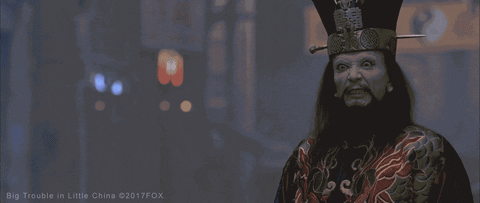
In 1956, Marvel's short-lived Yellow Claw comic featured a villain of the title's name. He was drawn with a bald head, long scraggly beard, slanted eyes and, yes, fingers that resembled claws. True to the name, his skin had a distinct yellow hue.
That was all make-believe. The real-life consequence of vilifying a race included things like the Chinese Exclusion Act of 1882, which banned Chinese immigration to the United States until 1943; the violence against hundreds of Filipino farmworkers in Exeter and Watsonville, Calif., who were mobbed and driven out of their homes by white Americans in 1929 and 1930; and the incarceration of more than 100,000 Japanese Americans during World War II.
For as long as Asians have lived in the United States, white people have been trying to label us: who we are, what we look like and how we should be described. It was also white people who defined our terminology — for many decades, "Orientals" was the moniker of choice. (And when people hurled slurs at us, we've been called Chinamen, Japs, gooks, Asiatics, Mongols and Chinks.)
That started to shift in the 1960s.
That's when the term "Asian American" was born. At the time, it was linked to political advocacy. Yuji Ichioka, then a graduate student and activist at the University of California, Berkeley, who would later become a leading historian and scholar, is widely credited with coining the term.
This period, often referred to as the Yellow Power Movement, was one of the first times these disparate people — Korean Americans, Vietnamese Americans, Japanese Americans, Indian Americans, Laotian Americans, Cambodian Americans, to name only some — grouped themselves under one pan-ethnic identity.

There was power in numbers, which Ichioka knew as founder of the Asian American Political Alliance. In a letter and questionnaire to new members, AAPA made clear that its organization was not just advocating for the creation of Asian American studies courses, but for broader social causes. That included adopting socialist policies and supporting the Black Liberation Movement, the Women's Liberation Movement, and anti-Vietnam and anti-imperialist efforts.
Spurred in part by the activism of the times, the term "Asian American" rose to popularity. It also helped that the Immigration and Nationality Act of 1965 was passed, allowing an influx of Asian immigrants to the U.S.
But over the years, the term Asian American revealed itself to be a complicated solution to the problem of identity.
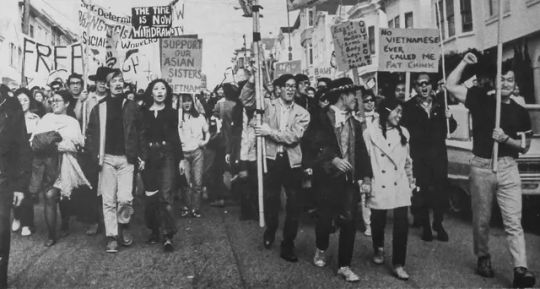
For one thing, most people who technically fit into the "Asian American" category refer to themselves based on their ethnic group or country of origin, according to the National Asian American Survey (NAAS).
Karthick Ramakrishnan, a professor at the University of California, Riverside, and the leader of NAAS, says he and his colleagues found that most Americans think of "Asian Americans" as East Asians.
Karen Ishizuka, who wrote Serve the People: Making Asian America in the Long Sixties, says that "Asian American" is still an important identifier because of the political power it has carried for decades. But it's crucial for people to be educated about what it once meant, she says, because the term has become "more like an adjective now, rather than a political identity."
Ramakrishnan and Ishizuka seem to reinforce why I've been searching for a term like yellow. In all my conversations about this issue, I've found myself remarking how the question of "What about yellow?" feels so hair-pullingly existential. Maybe it's because Asian American seems like it has been watered down from activism to adjective. I find myself wanting a label that cuts a little deeper.
In 1969, a Japanese American activist named Larry Kubota wrote a manifesto called "Yellow Power!" that was published in Gidra, a radical magazinecreated by Asian American activists at the University of California, Los Angeles.
His words were a rallying cry. "Yellow power is a call for all Asian Americans to end the silence that has condemned us to suffer in this racist society and to unite with our black, brown and red brothers of the Third World for survival, self-determination and the creation of a more humanistic society," he wrote.
Kubota wasn't the only one using yellow in a new and different way.
Ishizuka tells me about a bunch of different groups in the 1960s and 1970s: Yellow Seeds was a radical organization in Philadelphia that published a bilingual English-Chinese newspaper of the same name. The Yellow Identity Symposium was a conference at Berkeley that helped ignite the Third World Liberation strikes. The Yellow Brotherhood was an Asian group made up mostly of former gang members in Los Angeles that tried to disband gangs and curb drug addiction. Yellow Pearl, a play on "yellow peril," was a music project started by an activist group in New York's Chinatown.
I call up Russell Leong. He is a professor emeritus at UCLA and was the longtime editor of the radical Amerasia journal. As a kid, he used to make Yellow Power posters in San Francisco's Chinatown.
"Do you call yourself yellow?" I ask him.
"That's an interesting question," Leong says. "If I'm with a group of yellow people like my close friends, I'll call myself a Chink, a Chinaman, a yellow. But in public, I'm not gonna call anyone else that .... it depends what I'm comfortable with. It's the same with my English or Chinese name. Sometimes I'll use my American name. Sometimes I'll use my Chinese name."
Whatever the word, he adds, "I think it's better that we have more words to describe ourselves."
I get it. Despite the incompleteness of any one term, together they can become a powerful tool.
Still, if there were no term like "Asian American" — if it didn't exist, if we gave up on it entirely — then what could we have to anchor ourselves? After all, it's not just about a word; it's about an entire identity.
Ellen Wu, the historian from Indiana, digs into that point: "To circle back to this question of, do we use something like yellow or brown? ... Why do we even feel like we have to?"
Wu acknowledges that we're always craving words that might come closer to encapsulating who we are.
"I think that invisibility — that feeling that we don't matter, that worse, we're statistically insignificant — in some ways really fuels that desire to have a really concise and meaningful way of talking about ourselves," she says.
I pose all of this to Jenn Fang, an activist and writer who runs the appropriately-named blog Reappropriate.
She's not so convinced that yellow would resolve the issues that plague Asian American. It might be a useful identifier if yellow was used very intentionally and people knew its history, she says. But it could also fall into the same traps as Asian American. With ubiquity, it could eventually lose its power.
Fang also thinks that if people were to identify as yellow, there would be more people staying in their own lanes, so to speak — that, say, East Asians who call themselves yellow might not advocate on behalf of Asians who call themselves brown.
"Are you reclaiming the slur, or reclaiming our history?" Fang asks me. "The thing I'm concerned about is — is [yellow] a truly reflective way of talking about the East Asian American experience? Is yellow more nuancing? ... Or more flattening?"
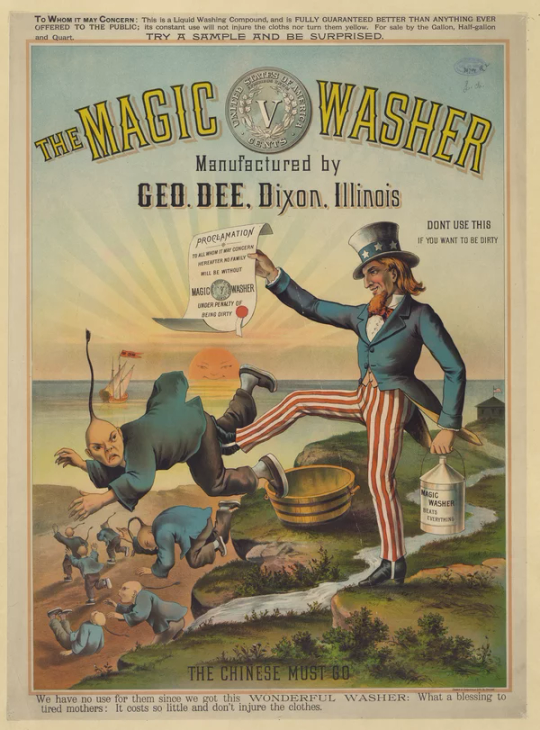
In the pinnacle of the civil rights era, activists used yellow as a term of empowerment — a term they chose for themselves. In some ways, I'm still seeing that today.
When the director of Crazy Rich Asians, Jon Chu, wanted to include a Mandarin version of Coldplay's song "Yellow" in a pivotal scene of his movie, some people were concerned that including it might not fly in such a high-profile movie about Asians. But that was exactly Chu's point. He wrote a letter to the band pleading his case — he wanted to attach something gorgeous to the word.
"If we're going to be called yellow," Chu wrote, "we're going to make it beautiful."
I can't help but think back to a group of people I spoke to late last year.
The Yellow Jackets Collective is an activist group, the name an echo of the 1960s. They're four people in New York City who identify themselves with a wide swath of terms, in addition to yellow: she/her, womxn, brown, Asian American, femme, child of Chinese immigrants, Korean American, 1st gen., first gen. diasporic and "collaborating towards futures that center marginalized bodies."
I send them an e-mail. "Why yellow?"
They point out that they don't just walk around the world calling every East Asian person they meet "yellow."
"Identity ideally is about you and how you feel and what you believe has shaped you," Michelle Ling responds.
I let Ling's words percolate. I don't know if I'll walk around in the world calling myself yellow — maybe to people who have similar experiences to mine; certainly not around people who've flung slurs at me.

Even so, having different words to choose from is itself a comfort. Having yellow in my arsenal makes me feel like my identity doesn't hinge on just one thing — one phrase, one history or one experience.
After a back-and-forth with the group, something they've written stops me in my metaphorical tracks. It's from the Yellow Jackets mantra; a snapback comment that I can't help but appreciate:
"We say Yellow again because at our most powerful we are a YELLOW PERIL and those who oppress us should be afraid. We are watching you. We are making moves."
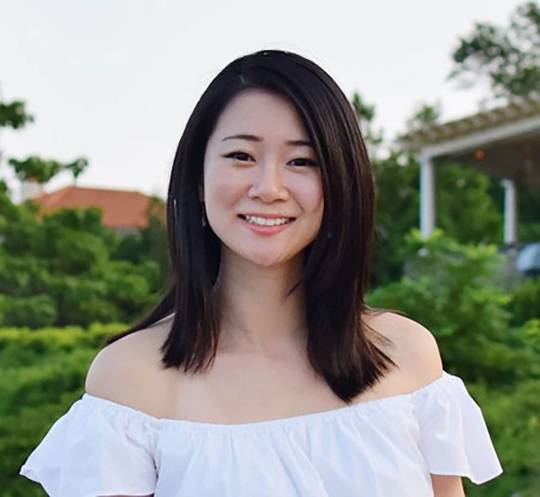
In “The Travels of Marco Polo,” the people of China are described as “white.” Records left by eighteenth century missionaries also report the skin color of Japanese and other East Asian people as clearly white. Yet in the nineteenth century, this perception quietly gave way to descriptions as “yellow.” In travel books, scientific discourse, and works of art, portrayals of East Asians began presenting them as having yellow skin. What happened in between?

In his 2011 book “Becoming Yellow: A Short History of Racial Thinking,” National Taiwan University professor Michael Keevak delves deeply into the origins and history of how and why East Asians went from being seen as “white” to being classified as “yellow.”
The first suspect implicated in applying the “yellow” label to East Asian faces is the famed Carl Linnaeus (1707-78). At first, Linnaeus used the Latin adjective “fuscus,” meaning “dark,” to describe the skin color of Asians. But in the tenth edition of his 1758-9 “Systema Naturae,” he specified it with the term “luridus,” meaning “light yellow” or “pale.”

It was Johann Friedrich Blumenbach (1752-1840) who went beyond the coloring ascribed by Linnaeus to apply the completely different label of “Mongolianness.” Regarded as a founder of comparative anatomy, the German zoologist did more than just use the Latin word “gilvus,” meaning “light yellow,” to describe East Asian skin color: he also implicated the Mongols, a name with troubling and threatening connotations for Europeans with their memories of Attila the Hun, Genghis Khan, and Timur.
While the references remained anomalous at first, travelers to East Asia gradually began describing locals there more and more as “yellow.” By the nineteenth century, Keevak argued, the “yellow race” become a key part of anthropology.
But the yellow label came associated with discrimination, exclusion, and violence. Just as no one in the world is purely white or black, neither does anyone actually have skin that is deep yellow. By “creating” a skin color and investing traits such as “Mongolian eyes,” the Mongolian birthmark, and mongolism (the old name for Down syndrome), Westerners made the perceived yellow race synonymous with abnormality. They also responded to the arrival of immigrants from Asia by sounding the alarm over the “yellow peril” - a term with a whole range of negative associations from overpopulation to heathenism, economic competition, and political and social regression. The hidden agenda of this racial color-coding becomes apparent when one considers who benefits from a hierarchy that places “yellow” and “black” beneath “white.”
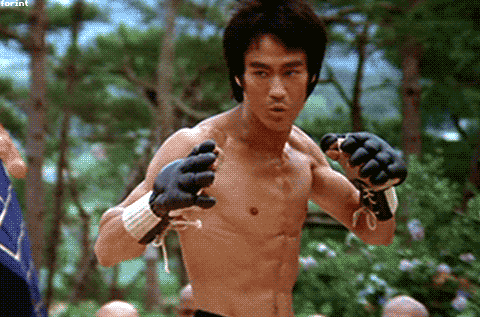
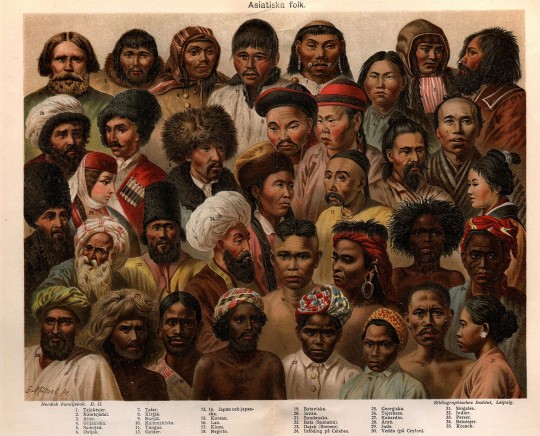
#kemetic dreams#asian#Blumenbach#german#european#exonym#banning exonyms#yellow#white#yellow people#black#black people#racist#conservatism#political#american politics#liberalism#civil rights#racist words#bruce lee#brownskin#brown skin#asian American#asian american literature#asian american history#asian heritage month#asian american author#asian american pacific islander heritage month#stop asian hate#aapi
5 notes
·
View notes
Text

Me at my Mousecapade sale in downtown Santa Cruz.





Pin buttons and stickers still VERY MUCH available over on my Etsy .
Hat contributed by the one and only Brandon Thompson @goodtimegoober. <- <- <- follow and commission him now.
8 notes
·
View notes
Text

"Encontraron el cráneo de un misterioso animal en una playa de California.
Te dejamos la noticia:
3 notes
·
View notes